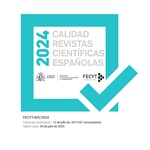Electronic Auction: Analysis of its Regulation in the European Union and in Spain. (RI §407078)

La subasta electrónica: análisis de su regulación en la Unión Europea y en España -
María de Miguel Molina y Francisca Ramón Fernández
La regulación de la subasta electrónica fue promovida especialmente por la iniciativa Comunitaria i2010. Por ello encontramos, tanto en el sector público como privado, el tradicional método de la subasta extendido al medio electrónico tanto entre empresas (B2B) como entre la Administración pública y las empresas (G2B). Sin embargo, la regulación de la subasta electrónica en ambos campos ha sido diferente y por ello en este trabajo hemos analizado dicha regulación en el caso particular español. Para el B2B, la regulación está basada en la buena fe de las partes y la protección de la información en este campo será fundamental en términos de seguridad. En el G2B, la Administración Pública deberá dotar a las empresas de las garantías de seguridad, objetividad y transparencia necesarias, y serán imprescindibles los recursos técnicos que permitan a las administraciones y empresas participar en la subasta electrónica. De este modo, un factor clave será la interoperabilidad tanto a nivel comunitario como de cada Estado miembro.
I. Introducción. II. Regulación de la subasta electrónica en la Unión Europea. III. B2B y subasta electrónica: su regulación en la Ley 56/2007 de 28 de Diciembre de Medidas de Impulso de la Sociedad de la Información. IV. G2B: la subasta electrónica como medio de contratación regulado en la Ley 30/2007 de 30 de Octubre de Contratos en el Sector Público. V. Consecuencias de la introducción de medios electrónicos en las subastas electrónicas en España. VI. Conclusiones. VII. Bibliografía.
The regulation of electronic auctions was particularly promoted through Community initiative i2010, which in Spain has given rise to a number of rules for promoting the Information Society. Thus in both the public and the private sectors we find that the traditional auction instrument has been widened to embrace electronic auctions both between businesses (B2B) and between government and business (G2B). However, the regulation of each has various idiosyncrasies that are analysed in this document with particular regard to the Spanish case. In the B2B area, regulation is more a matter of trust between businesses so data protection will be fundamental in order to give security to participants in electronic auctions. In the G2B area, the Government must provide businesses with the guarantees on security, objectivity and transparency. For this to happen, the necessary technical means must be in place in all governments and businesses. A key factor will be interoperability both within each Member State and at the Community level.
I. Introduction. II. Regulation of electronic auctions in the European Union. III. B2B electronic auctions: their regulation under Spanish Law 56/2007 of 28 December on Measures to Advance the Information Society. IV. G2B electronic auction as method of awarding contracts in Spain regulated by Law 30/2007 of 30 October on Public Sector Contracts. V. Consequences of the introduction of electronic means into Spanish Government as a result of electronic auctions. VI. Conclusions. VII. References.

 DIRECCIÓN / MANAGEMENT
DIRECCIÓN / MANAGEMENT